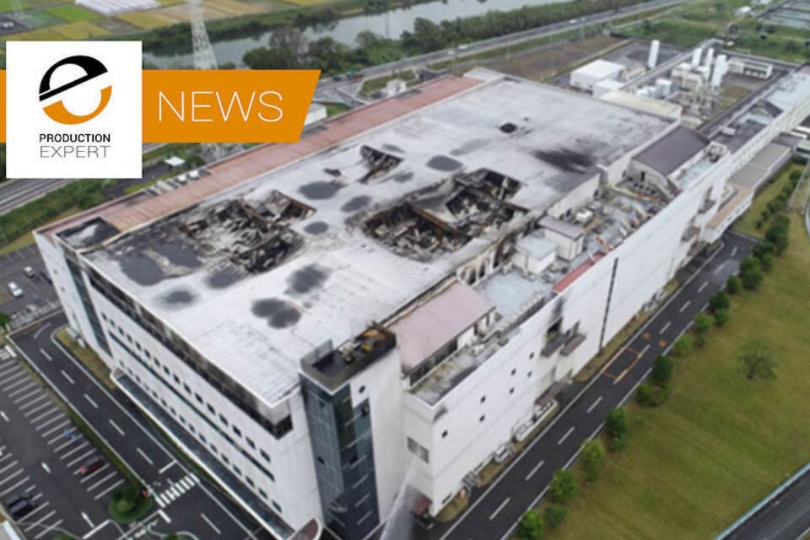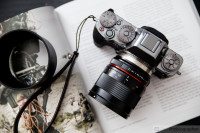
Mirrorless cameras haven’t taken over the photographic world just yet and, as if to prove the point, the entry-level sector of the DSLR market is a fierce battleground. Old adversaries Canon and Nikon are keen to get the beginner hooked into their respective systems in the hope that they remain with the brand they choose now for many years to come.
So if you’re looking to take your first steps into the world of DSLRs, which way should you jump? We picked the Nikon D3500 and Canon EOS 200D - two entry level models with barely the price of a 64Gb SD card between them - to find out.
There are many similarities between this beginner-friendly pair - but some key differences as well!
Design and build
What will become apparent as you read through this review is that the two cameras we have here share a large number of specification similarities, starting with the sensor. Both the D3500 and EOS 200D feature an APS-C sized light catcher with a 24. 2 megapixel resolution, while processing is handled by EXPEED 4 and DIGIC 7 engines respectively.
There’s little to split them when it comes to general design as well. A few millimetres separate their respective dimensions and well-sized handgrips are notable on both models so you’re sure to get a solid grip irrespective of which model you opt for. The D3500 is marginally lighter, tipping the scales at 415g for the body, battery and memory card, plus a further 205g if you add on the 18-55mm kit lens. The EOS 200D body, by comparison, tips the scales at 453g, with the 18-55mm kit lens adding an extra 215g on top. Unless you’re particularly weight-sensitive, it’s highly unlikely that you’ll notice any difference at all.
One area you will notice a difference, however, is in claimed battery life. Based on the CIPA standards of testing, the Canon will deliver around 650 shots per battery charge, whereas the Nikon should offer more than twice that - up to 1550 shots. If you’re intending to use the camera for a round the world trip in remote locations, the Nikon certainly edges it here.
When it comes to autofocusing, the Nikon offers 11 user-selectable focusing points to the Canon’s nine. The EOS 200D does, however, offer Dual Pixel CMOS AF which comes into its own if you use Live View; composing shots with the rear LCD instead of the optical viewfinder. Canon claims this system makes for the world’s fastest Live View focusing system, but it’s not available over the whole frame. The D3500 uses a contrast AF system in Live View, which may be slower than the EOS 200D, but the whole frame is covered.
Large handgrips and simple top-plates make these models easy to use
Image quality
With the same resolution in both cameras, we’ll have to look elsewhere for differences in terms of image quality. Handily, you don’t have to delve too deeply to find a key differentiation - the D3500 doesn’t have an optical low pass filter (OLPF) in front of the sensor. This matters. An OLPF is positioned in front of the sensor in some DSLRs (including the EOS 200D) to help reduce some optical irregularities. It does this very well, but at the same time marginally reduces image quality. The fact that the Nikon doesn’t have an OLPF in front of its sensor should mean it offers better sharpness. You’ll be able to comfortably print above A3 from both models, but the Nikon may have the edge.
If shooting hand held in low light is more your thing, however, the Canon offers a marginal advantage. Both have ISO ranges from 100-25,600, but the EOS 200D can be expanded to 51,200, which may give you the edge in really low light conditions. Conversely, the Nikon is likely to focus more accurately in low light, with AF sensitivity down to EV-1 to the Canon’s EV-0. 5. The Canon’s sensitivity does drop to EV-2 when Live View is activated, however.
As a beginner, you’re likely to want to buy additional lenses and both manufacturers offer extensive lens systems to tempt more money from your wallet. Lens range is one main area where DSLRs continue to have a big advantage over mirrorless - whatever you want to shoot with a Canon or Nikon DSLR, there will be a lens for it, both from the manufacturers themselves and independents.
The vari-angle screen on the Canon (right) is a definite advantage over the fixed screen Nikon
Video
Being beginner models, the Canon and Nikon aren’t overflowing with video features, but they do offer more than enough for blogging or capturing everyday life. Both provide Full HD capture at up to 60 frames per second. Sound is recorded in mono on both, but the Canon does have the advantage of a video time lapse mode plus a 3. 5mm microphone jack should you wish to connect an external microphone.
Video users may also appreciate the Canon’s vari-angle touchscreen rear LCD. It can be rotated for vlogging (or selfies) plus you can also touch the screen to change focusing points. The Nikon’s fixed screen has fewer dots (921,000 to the Canon’s 1. 04 million) and it’s not touchscreen either, so less versatile in this respect.
Other features
Let’s start with some more similarities. To help the beginner, both cameras feature built-in guides to help you get to grips with key functions on the cameras. The Nikon and Canon also offer creative filters that don’t need a computer to generate cool pictorial effects, shoot continuously at up to 5 frames per second and offer shutter speeds ranging from 30 seconds to 1/4000sec.
Integral flashguns are included on both models, but the Canon’s is slightly more powerful so will offer a little more reach and while both models offer RAW shooting, the Canon captures in 14 bit as opposed to the Nikon’s 12. These extra two bits deliver more colours and smoother tonal gradations, but only a trained eye is really likely to notice the difference.
If you like to shoot and share on the move, the EOS 200D has the edge with Bluetooth, Wi-Fi and NFC technologies all on tap to offer great versatility with a wide range of devices. The D3500 by comparison only offers Bluetooth. If you’re likely to shoot in areas where you need to be quiet, the Nikon’s QC (Quiet Continuous) mode may come in handy.
Which makes the best option for a DSLR novice?
Verdict
As with most comparisons, your decision is likely to come down to the features that matter the most to you, especially when you consider that these two cameras have so many key specifications in common - resolution, video spec, frame rate, size and so on.
The lack of optical low pass filter in the Nikon, plus its superior battery life certainly make it a strong choice if picture quality and longevity of shooting are of paramount importance to you. The Canon, on the other hand, has greater connectivity options, is marginally superior when it comes to video and does have that more versatile rear LCD, but it is also a little more expensive.
It’s a tough decision that ultimately only you can make, but rest assured that whichever way you jump you’ll be getting a great camera that’s easy to use and opens a window to the wonderfully varied world of DSLR photography.
Nikon D3500
Canon EOS 200D
Resolution
24. 2 megapixels
24. 2 megapixels
Processor
EXPEED 4
DIGIC 7
ISO range
100-25,600
100-25,600 (expandable to 51,200)
Video
Full HD, 60p
Full HD, 60i
Rear LCD
3-inch, fixed, 921k dots
3-inch, vari-angle, 1. 04m dots
Connectivity
Bluetooth
Bluetooth, Wi-Fi, NFC
Weight (body with card and battery)
415g
453g
Dimensions (WxHxD)
124x97x69. 5mm
122. 4x92. 6x69. 8mm
2018-12-24 03:00














